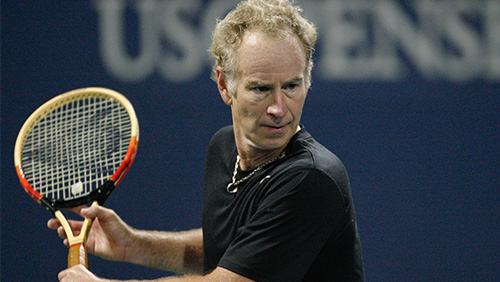We live in an era where three men – Rafael Nadal, Roger Federer and Novak Djokovic are rewriting tennis history as they dominate the sport in a manner that is completely unprecedented.  Between the trio, they have won 56 Grand Slam titles. Yet there was a time where three other men might well have done the same.
Between the trio, they have won 56 Grand Slam titles. Yet there was a time where three other men might well have done the same.
Two Americans – Jimmy Connors and John McEnroe – and one Swede, the eponymous Björn Borg, were constantly in the limelight as the 1970’s gave way to the 1980’s. In total, they won 26 Grand Slam titles between them, but it may have been so many more. This week, we look at why Björn Borg walked away from the game when he was at his untouchable best.
We look at the feats of messrs Djokovic, Nadal and Federer so rarely that it would be feasible to imagine that no other records existed before they came along, or still exist despite their recent dominance of the sport. Borg, however, was a one-off. He won the French Open and Wimbledon back-to-back in three consecutive seasons, something no other player has ever got close to.
Björn Borg mastered two surfaces that are at opposite points on the spectrum in tennis – clay and grass. In total, he won six French Open titles and five Wimbledons, but what it even more amazing than his 11 Grand Slam titles is the fact that while he failed in nine attempts to win the U.S. Open (losing in the final four times) but also, he only entered the Australian Open once, being absent in the other eight years he might have been a strong contender.
Borg was an enigma, on and off the court. He fell into a space in tennis where he battled against two players who were known hot-heads, Jimmy Connors and in particular, John McEnroe. It would be against McEnroe that the ice-cool Swedish player would define his career, in back-to-back Wimbledon finals that captured the spirit of the time and the essence of what made Borg so different.
The 1980 final may have defined the pair of them, but McEnroe would get his revenge, winning the next year’s final in four sets after losing the first set. A few weeks later, the two men would meet for the final time in competition, playing out the U.S. Open final in stunning fashion.
McEnroe losing the first set and winning in four again at Flushing Meadow did something to Borg that had never happened before – it ended his command of the tour, and in effect broke him. After two years in which he played only one tournament, Borg announced his retirement at the age of just 26 years old. To put that into context, Federer is currently 39 and ploughing on in his personal quest to win the race to 21 Grand Slam titles.
Björn Borg tried to come back, picking up a wooden racquet in 1991, refusing to ‘go graphite’ and suffering as a consequence. McEnroe hadn’t wanted his great nemesis to retire, and pleaded with him to come back, but the man to whom losing was so tough that he would go into lengthy spells of silence was thawed out.
After tennis, Borg would face near bankruptcy due to failed business endeavours but would return to the circuit behind the scenes and retains a place of great fondness in the affections of tennis fans around the world. Today, his official website is a supplier of – amongst other items – elite underwear.
Forever an enigma, to watch Björn Borg play tennis was to watch a player who reimagined the game. He didn’t play the game at the pace that a Djokovic or McEnroe did, he simply slowed the game to his own ice-cool pace. As Ilie Năstase once commented on the style and skills of his rival, “We’re playing tennis. He’s playing something else.”
For a decade, no-one played tennis like Björn Borg. Since the Swede’s retirement, nobody has even attempted to do so. That is, perhaps, the greatest compliment any tennis player can ever attain – to have mastered the game in their own style to such a degree that no-one dares try to replicate it.
